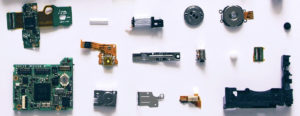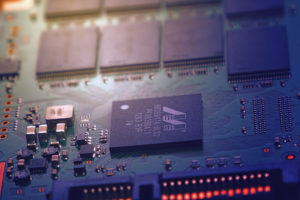7 ways to get your sensors to work
12 June 2020

From drug delivery devices to lightbulbs, the use of sensors can add immense benefits such as improving the product’s efficiency, reducing user error and enabling entirely new features. However, integrating sensors into a product can pose great challenges:
- The act of measurement can change what you measure. For example, adding a temperature sensor to a small device can significantly change its thermal mass.
- It can be difficult to add a sensor without making the device larger, and customers face the difficult choice between a smart device or a slim device.
- Electronic sensors require a power source, which in addition to adding bulk, typically requires battery replacement or charging by the user.
Complications like these can make the prospect of adding sensing capability to a device seem unacceptably risky to even hardened product developers. The risks are even greater in medical devices than in many other industries.

However, we have always found a way to overcome these challenges. Although each case is unique, we can share some strategies that have allowed us to succeed in the past:
- Make the sensor as small as possible.
New types of sensors are constantly being developed that are smaller, more sensitive, and require less power than their predecessors, so keep up to date with sensing technology. - Do more with the information.
Signal processing can sometimes extract a surprising amount of information from even a simple sensor. For example, rather than measure just the average flow rate in a product, you could also measure the flow response to changes, the frequency spectrum, and so on to give much greater insights. - Sense mechanically rather than electronically.
Sensors need not be electronic. Mechanical features can be designed to trigger only under defined forces, temperatures, vibration, and so on. A simple example is the bimetallic strip that acts as a mechanical temperature sensor in most kettles. Even if some of the sensing capacity must be electronic, the remaining functions may be carried out by purely mechanical processes. - Consider energy harvesting.
Power generation can be used instead of batteries in many places, helping with shelf life, reusability, recycling, and disposability. Examples range from the common, such as self-winding watches, to those still in development, such as piezoelectric textiles and power generators that exploit temperature differences. - Make the sensing elements serve a mechanical purpose as well.
Sensors invariably have a physical embodiment, and their mechanical properties can sometimes be put to good use as structural components of the device, thereby minimising added bulk. - Sense something else.
Sometimes, the part of the system that is to be sensed is inconveniently placed, or otherwise difficult to sense. In such cases, we can sense a different part of the system, or sense a different attribute entirely. For example, the flow of fluid through of one part of a system might be deduced by measuring a pressure change, or by measuring the rate of heat transfer instead. - Offload from the device.
Sometimes we can offload work from the device onto another part of the system, or even eliminate all sensors from the device, and instead sense remotely.
At Springboard, our team of scientists and engineers use these and other strategies regularly to solve our clients’ device sensing challenges, in industries from medical devices to consumer products. If you would like to talk about how creative engineering solutions could help you, please get in touch.
— Gabriel Villar


